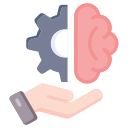Progressive Muscle Relaxation Techniques: Unclench, Unwind, Uncover Calm
What Progressive Muscle Relaxation Is (and Why It Works)
Progressive Muscle Relaxation began in the 1920s with physician Edmund Jacobson, who noticed that stress hides in tense muscles. By intentionally tensing and then releasing specific groups, you teach your nervous system to recognize ease. No fancy gear required—just curiosity, patience, and your body.

Your First PMR Routine: Simple, Gentle, Doable Today
Set the stage in one minute
Find a quiet spot, sit or lie down, and loosen anything restrictive. Decide your intention—calm, focus, or sleep. Turn notifications off. Inhale slowly through the nose, exhale longer through the mouth. Tell yourself, “I will meet tension with curiosity,” and let your shoulders drop a little.
The classic tense–release sequence
Start with feet, then calves, thighs, glutes, abdomen, hands, forearms, upper arms, shoulders, neck, and face. For each group, inhale and tense for five seconds, then exhale and release for ten. Notice contrast: heavy versus light, cool versus warm, gripping versus softening. Move gradually, never forcing.
Seal the practice with reflection
After the final release, take three easy breaths and scan your body for lingering tension. Name one area that softened most and one you want to revisit next time. Jot a note, or share your observation with our community to build encouragement, accountability, and a kinder dialogue with yourself.
PMR for Better Sleep
An evening wind-down that actually sticks
Dim lights, silence devices, and do a five-minute PMR sweep from toes to forehead. Imagine releasing the day as if setting down a heavy bag. Finish with one kind sentence to yourself. If you find this soothing, subscribe for our weekly bedtime PMR audio to keep the habit alive.
The 3 a.m. reset
When you wake in the night, avoid clock-checking. Instead, tense and release your feet, then your hands, in a slow loop with long exhales. The small, rhythmic movement shifts focus from rumination to sensation. If a worry persists, whisper, “Noted—I will handle this in daylight,” and continue.
Sleep journaling meets PMR
After PMR, note two body areas that softened and one thought that felt lighter. Over a week, patterns emerge—maybe shoulders chronically grip or the jaw holding eases first. Share a highlight with us, and we can feature community insights that help others personalize their nighttime routine thoughtfully.
Plant your feet, press toes gently into the floor for a breath, then release. Make loose fists for five seconds, soften for ten. Shrug shoulders slightly, then let them melt. Repeat once. End with one long exhale. Tell a colleague if it helped, and invite them to try a supportive pause.
At Work and On the Go: Micro-PMR Moments
PMR for Athletes and Active Bodies
Before training, run a quick PMR scan to notice any hidden tightness. Calves, hips, shoulders—lightly tense and release each. You will sense movement pathways more clearly, improving form and reducing compensations. Many athletes report steadier breathing and smoother starts when they arrive with deliberate softness.

Troubleshooting and Personalizing Your Practice
Think gentle engagement, not clenching. Aim for about thirty to fifty percent effort—enough to feel contrast without strain. If you accidentally overdo it, shorten holds, widen exhales, and try smaller areas. Consistency beats intensity. Leave a note about your sweet-spot tension level to guide fellow beginners.

What studies suggest
Research has linked Progressive Muscle Relaxation with reduced perceived stress, lower anxiety, and improved sleep quality across various groups. Many studies highlight better autonomic balance and calmer self-reports. While individual responses vary, the trend is encouraging—especially when PMR is practiced regularly and combined with mindful breathing.
How PMR calms your system
Alternating tension and release educates interoception—the body’s sense of internal state—and supports parasympathetic activation. Over time, your baseline may shift toward calm, with fewer spikes in reactivity. Small, repeated signals of safety accumulate, like savings for hard days, available when you most need them.
Help us learn together
Practice a short routine daily for one week, then share one concrete change: sleep onset minutes, jaw ease, or meeting calm. Your stories help others personalize Progressive Muscle Relaxation Techniques. Subscribe to join community challenges, and watch how shared curiosity turns small practices into lasting wellbeing.
